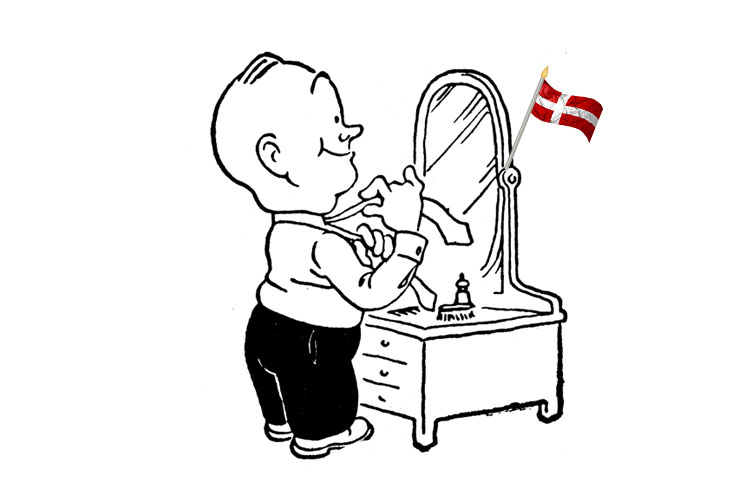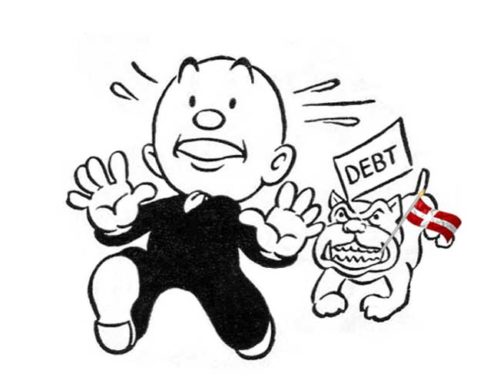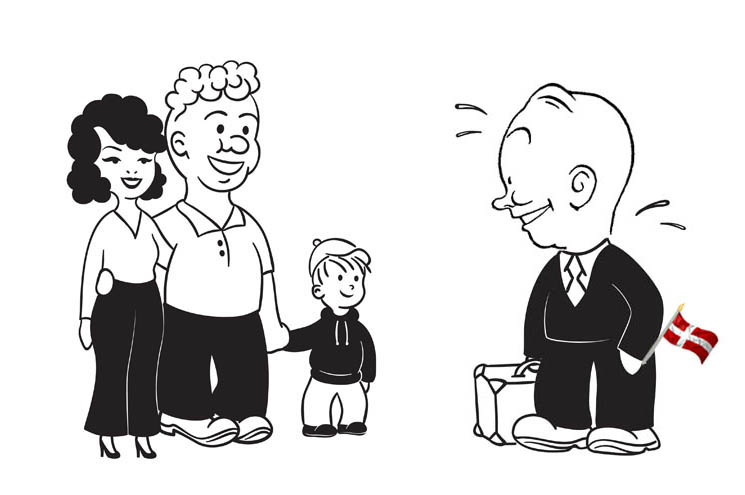There’s no reason to spend a lot on what you wear to work in Denmark. Danes, by nature, are not flashy dressers.
In most Danish business environments, you’ll be perfectly well dressed in a fitted pair of business trousers, dark shoes, and a solid-color sweater or dress shirt. Male or female, you’ll never go wrong with quiet colors like burgundy, dark blue, dark green, brown, or black.
Subtle good taste is the preferred style. Obvious designer labels are considered tacky, but quality cut and fabric are appreciated.
For a personal touch, you can add a chic scarf in silk or wool, an eye-catching (but not flashy) jacket, or simple jewelry, like a silver pendant or nice watch. Colorful eyeglass frames are also considered a good way to personalize your look.
Suits and ties are only required in the financial industry, although younger bankers often prefer an open collar. Some salespeople also wear business suits to make their products look more high-end. The standard uniform for male executives is a blue business suit, pale shirt open at the collar, and pointy leather shoes.
Female top executives usually wear expensive knits set off by expensive accessories. Women are almost never required to wear a dress in Denmark unless they are meeting with Danish royalty, and even then many women wear formal trouser suits.
Dress for the climate
If you like wearing dresses and skirts, you can, although the Danish love of bicycling means that skirts worn in Denmark are generally long and loose.
If women do wear short skirts, they usually wear thick hose or leggings or even trousers beneath them. This is less about modesty and more about warmth.
High heels are uncommon in Denmark: any shoes that are difficult to walk in are considered upraktisk (impractical), and anathema to the sensible Danes. Heels are particularly treacherous on uneven bricks or cobblestones, which you’ll still find on many Danish streets.
Danish women’s make-up is generally light and natural-looking, and their hairstyles simple.
This is at least in part because Denmark is a windy, rainy country: the exquisitely painted face or a complex hairstyle you leave home with is unlikely to make it to your destination.
Spend your money on outerwear
A good investment in work clothing is to have a high-end coat or jacket that works for Denmark’s long winter season, which lasts from roughly October to April.
You’ll be arriving to meet business contacts and shaking hands while still wearing your coat, so your military surplus duffle jacket from your college days is probably not the best choice.
You don’t have to show up in a cashmere trench coat, but well-made, waterproof outerwear that won’t crush your business clothes will be worth its weight in gold.
Keep in mind that while Denmark is chilly in winter, it is rarely Arctic. Some foreigners arrive with fleece-lined parkas more suitable for northern Norway than for Denmark. They sweat their way through a few October afternoons before realizing they’ve made the wrong choice.
Buying your wardrobe when you get to Denmark
You could always buy your outerwear after you get to Denmark. There’s a wide selection and it’s often discounted, meaning it only costs twice as much as it would anywhere else instead of three or four times as much.
In fact, buying the majority of Danish work wardrobe after you get to Denmark isn’t a bad idea. After a couple of months on the job, you’ll get a sense of what the general “look” is in your company or industry.
To get your Danish-conforming wardrobe, shop the twice-annual sales at the local department stores – it’s what the Danes do. Or order your clothing online. Remember to buy from shops that ship from within the European Union to avoid punishing customs fees.
Buy Kay’s books about Denmark on Amazon, Saxo, Google Books, Apple Books, Barnes & Noble Nook, or via our webshop.
Image mashup copyright Kay Xander Mellish 2025
Read more:
Decoding your Danish pay slip and understanding your Danish taxes
How to handle a Danish business meeting
Your first day at work in Denmark: Handshakes, passwords, and several people named Mette
Trailing spouses and working in Denmark
Motivating Danish employers: Tips for foreign managers
Networking in Denmark: 5 useful tips for making Danish business contacts
Secrets of socializing with your Danish colleagues
The Danish art of taking time off
Your free daily banana and five weeks off: Job benefits in Denmark
Why job titles aren’t that important in Denmark
The Danish job interview
Job search in Denmark: Your Danish cover letter plus LinkedIn plus two magic words
Job hunting in Denmark: Putting together your Danish CV
Fine-tuning your approach to the Danish job market
Finding a job in Denmark: Some tips from my experience
Is joining a union a waste of money? And what is the difference between a union and an A-kasse?
Will I ever be promoted? Plus, how to leverage your annual review
Taking sick days in Denmark, plus how to deal with stress





